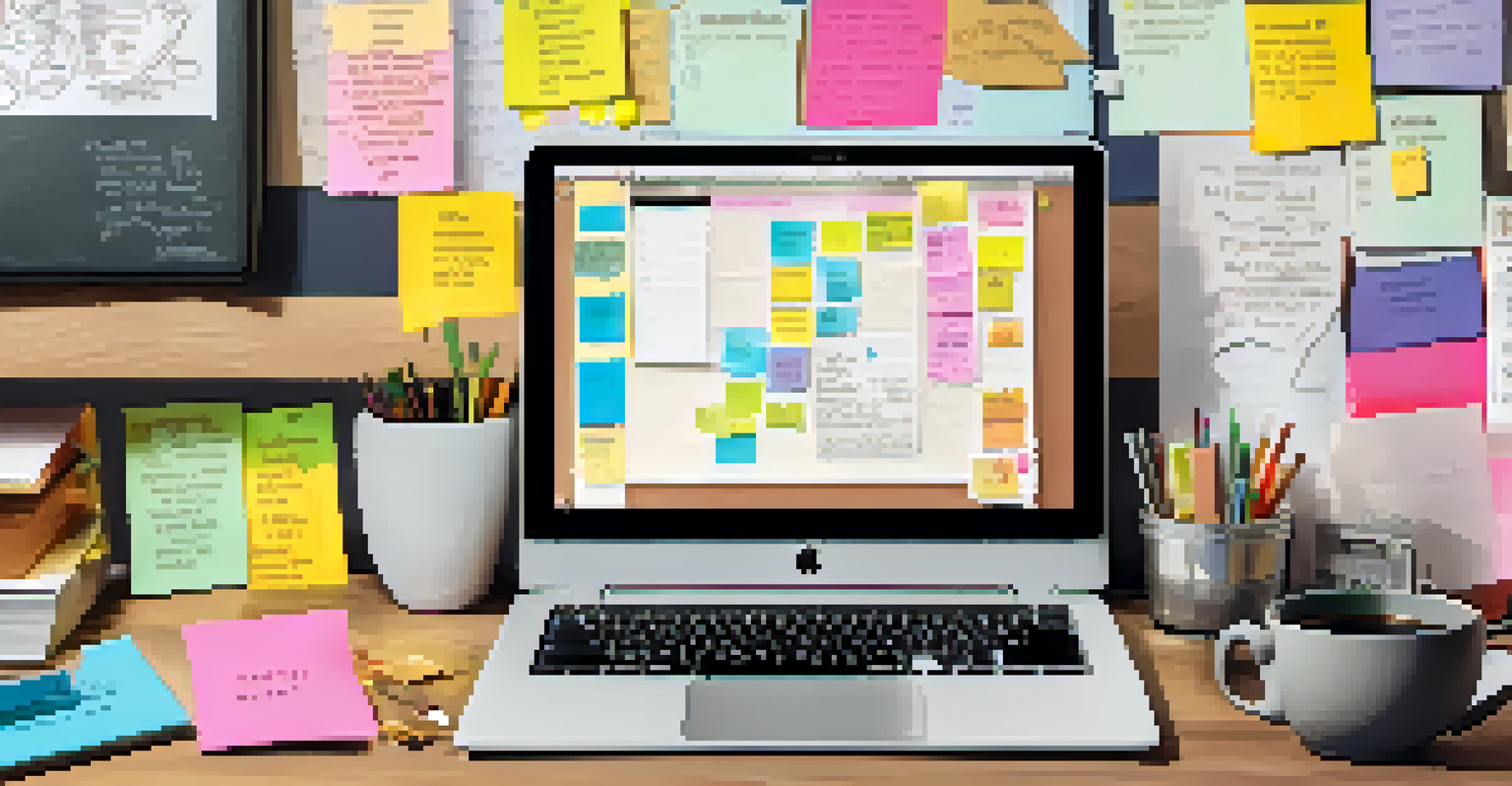Overcoming Obstacles: Visualization Techniques for Resilience

Understanding Visualization and Its Benefits
Visualization is a mental technique that involves creating images in your mind to achieve specific goals. It’s often used by athletes to improve performance, but it can benefit anyone facing challenges. By picturing success, you train your mind to respond positively when obstacles arise.
Visualization is daydreaming with a purpose.
This practice can help reduce anxiety and boost confidence. When you visualize overcoming a hurdle, your brain begins to prepare for that reality, making it easier to face challenges head-on. Essentially, it’s like preparing for a big game by rehearsing in your mind.
The benefits extend beyond just mental preparation. Visualization can enhance your emotional resilience, allowing you to bounce back quicker from setbacks. This is because you’re not just imagining success; you’re also creating a mental roadmap for how to get there.
Creating a Visualization Routine
To reap the benefits of visualization, establishing a regular routine is essential. Consider setting aside a few minutes each day to practice this technique, ideally at a time when you can relax and focus. Consistency is key; the more you practice, the more effective your visualizations will become.

Start by finding a quiet space where you can sit or lie down comfortably. Close your eyes and take a few deep breaths to center yourself. As you breathe, begin to visualize a scenario in which you successfully overcome an obstacle you’re currently facing.
Visualization Enhances Performance
By picturing success, individuals can train their minds to respond positively to challenges, ultimately improving their performance.
You might picture yourself in a challenging situation, like a job interview or a difficult conversation, and imagine yourself navigating it with confidence. By repeatedly visualizing these scenarios, you’ll build familiarity and ease with them, preparing your mind for real-life challenges.
Incorporating Sensory Details in Your Visualization
One way to enhance your visualization practice is by incorporating sensory details. This means not just seeing the outcome in your mind, but also engaging other senses to create a richer experience. For instance, if you’re visualizing giving a presentation, imagine the sound of your voice, the feel of the podium, or the sight of an engaged audience.
What the mind can conceive and believe, it can achieve.
Engaging multiple senses can make the experience more vivid and impactful. The more real it feels in your mind, the more likely you are to replicate those feelings in real life. It’s like creating a movie in your head, where you’re both the director and the star.
By immersing yourself in these sensory experiences, you’re reinforcing positive feelings associated with success. This not only boosts your confidence but also trains your brain to react positively when faced with similar situations in the future.
Visualizing Success and Positive Outcomes
A crucial aspect of effective visualization is focusing on success and positive outcomes. Instead of imagining potential failures or obstacles, direct your thoughts towards achieving your goals. This shift in focus can significantly alter your mindset and increase your motivation.
For example, if you’re worried about a big presentation, visualize not just the successful delivery but also the accolades and positive feedback you receive afterward. By envisioning a successful outcome, you’re more likely to approach the situation with optimism and determination.
Routine Builds Visualization Skills
Establishing a consistent visualization practice allows individuals to mentally prepare for obstacles and navigate them with confidence.
This positive visualization can act as a self-fulfilling prophecy. When you see yourself succeeding, you naturally begin to act in ways that align with that vision, increasing your chances of achieving it in reality.
Using Visualization in Daily Life
Visualization isn’t just for major life challenges; it can be integrated into your daily routine. You can use it to prepare for meetings, social interactions, or even mundane tasks. By visualizing positive outcomes in everyday scenarios, you build a resilient mindset that helps you face life’s ups and downs.
Consider starting your day with a brief visualization session. Picture your goals for the day, how you’ll tackle any challenges, and the positive interactions you hope to have. This sets a proactive tone for your day, allowing you to navigate challenges more smoothly.
Even during stressful moments, take a moment to visualize a calm and successful resolution. This practice can help reduce stress and anxiety, leading to a more resilient and positive outlook on daily life.
Overcoming Doubts and Negative Thoughts
Doubt and negative thoughts can often derail our progress, but visualization can help combat these feelings. When you face self-doubt, take a moment to visualize overcoming it. Picture yourself successfully pushing past these negative thoughts, reinforcing your belief in your capabilities.
For instance, if you’re grappling with imposter syndrome, visualize yourself in a situation where you are confident and competent. Imagine receiving positive feedback and recognizing your accomplishments. This can help shift your mindset from doubt to confidence.
Positive Focus Fuels Motivation
Focusing on successful outcomes during visualization can shift mindsets, increase motivation, and act as a self-fulfilling prophecy.
By regularly practicing this technique, you create a mental buffer against negativity. It’s like building a shield that protects you from self-doubt, allowing you to approach challenges with a clearer, more resilient mindset.
The Science Behind Visualization and Resilience
Research supports the effectiveness of visualization for building resilience. Studies have shown that mental imagery can activate the same brain regions as real-life experiences, meaning your brain doesn’t distinguish between visualized success and actual achievements. This makes your practice even more powerful.
Additionally, visualization can alter your physiological responses to stress. By imagining success, you can lower cortisol levels and promote a sense of calm, preparing your body to handle real-life challenges more effectively. It’s a holistic approach that benefits both mind and body.

Understanding the science can motivate you to integrate visualization into your life. Knowing that you’re not just daydreaming, but actively training your brain to be more resilient can reinforce the importance of these practices.